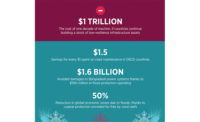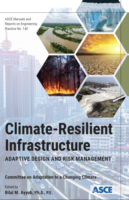With Hurricane Harvey almost two years in the rearview mirror, Houstonians have started to imagine a future city that is resilient to storms and stressors that can be a model for the nation.
Two efforts are underway to nail down the details of what that city will look like. The first will come through the Houston mayor’s office. In February, the city named Marissa Aho as chief resilience officer. Through a $1.8 million grant from Shell and assistance from the nonprofit, 100 Resilient Cities, Aho is working on a resilience plan to be released this fall. The plan is expected to include improvements that can be made immediately to improve the resilience of some Houston neighborhoods.
The second, called Houston 2020 Visions, is a broader, more speculative collaboration between AIA Houston and the city of Houston. The concept is the idea of architect and Houston City Council Member David W. Robinson. Houston 2020 Visions is a competition similar New York’s Rebuild by Design that seeks a broad array of proposals on how to make the city more resilient. Submissions for that competition are due on the second anniversary of Hurricane Harvey, Aug. 25.
“We think there is going to be some synergy,” between the two plans, says Julia Retta, Robinson’s deputy chief of staff. While there is no money yet for the proposals from Vision 2020, it is possible some of the ideas could be implemented in the future, she said.
To help everyone get on the same page, Stantec held a two-day Houston Resiliency Innovation Workshop that brought together 50 people in Houston from education, government, business and non-profit sectors to start to develop a cohesive vision for the city.
“The workshop came out of the knowledge that Stantec alone can't tackle these issues,” said Laura Sachtleben, a senior principal architect with Stantec in Houston. Sachtleben, and fellow AIA member, Illya Azaraoff, founder of +LAB Architects in New York, facilitated the workshop.
“If we are going to get all of these resilience challenges right, it’s going have to be public-private partnerships” Jaime Gonzalez, Houston Urban Conservation Programs Manager for the Nature Conservancy said in a video about the Stantec workshop. “This is a problem that is so large that it needs a multi-sector approach.”
Among other things, the workshop attendees discussed resilient architecture, engineering and financing.
“If all we are talking about is how to be prepared for the next Hurricane Harvey, then we are not going to be prepared for what’s going to happen next,” Sachtleben says. “Today, we’re worried about flooding, but in the future, we are going to have to worry about a lack of water.”
One of the ideas that came out of the workshop was infrastructure that can fill multiple needs – such as a tunneling system not only for water conveyance but also for traffic. The group also seriously discussed ideas including linking more communities, mobile schools, a water-ready vehicle fleet, and a virtual digital twin city.
While Stantec plans to submit proposals into the Vision 2020 contest, the company made all of the information and findings public, and urged everyone in the workshops to use the ideas from the workshop to fuel their own ideas and submissions.
The winning submissions of the Vision 2020 exercise will be displayed around the city and, through a grant from the national AIA, around the United States to help inspire others to think and plan for resilience.





Post a comment to this article
Report Abusive Comment